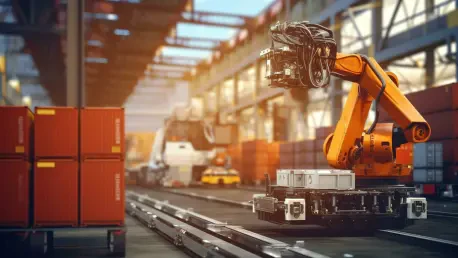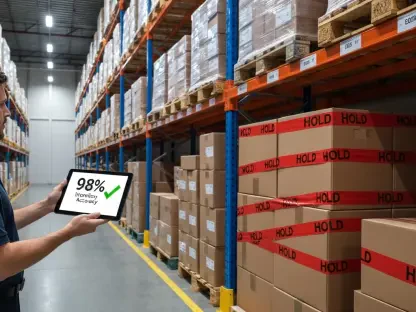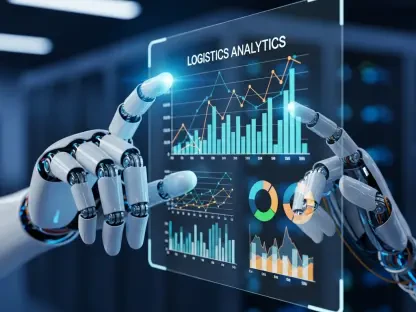In the face of a dynamic global marketplace evolution, the urgency for logistics automation strategies has never been more pronounced. Supply chains worldwide are under pressure as businesses strive for efficiency, speed, and accuracy to meet ever-growing consumer expectations. The advent of logistics automation has been a game-changer, promising to reshape the industry with transformative technologies. This article will explore the current landscape of logistics automation, examine expert insights, and consider future prospects and challenges that will likely shape the sector in the years to come.
Current Landscape of Logistics Automation
Growth and Adoption Trends
The logistics sector is witnessing unprecedented growth in automation adoption, resulting in numerous advancements that have transformed operations. Recent studies indicate that the global logistics automation market is expanding rapidly, with a projected compound annual growth rate exceeding 12% from 2025 to 2027. Key drivers of this growth include e-commerce’s relentless surge and increasing demand for efficient supply chain solutions. Automation technologies, such as robotics, artificial intelligence, and the Internet of Things (IoT), have become central to the logistics ecosystem, helping organizations optimize processes and reduce human error.
Industry reports highlight that regions such as North America and Europe are at the forefront of adopting logistics automation. These areas boast a high concentration of technology providers and robust infrastructure, facilitating the seamless integration of new solutions. Furthermore, the Asia-Pacific region has been identified as a burgeoning market due to rapid industrialization and ongoing efforts to modernize supply chains across various sectors.
Applications and Innovations
Numerous real-world applications of logistics automation illustrate its transformative potential across industry verticals. Notable examples include Amazon, which leverages advanced robotics in fulfillment centers, drastically reducing the time it takes to process and ship orders. Similarly, companies like DHL and FedEx are utilizing autonomous drones and vehicles for last-mile delivery, enhancing efficiency and reducing delivery times in challenging environments.
In addition, artificial intelligence and machine learning are revolutionizing inventory management and demand forecasting, allowing logistics companies to anticipate trends and efficiently allocate resources. A prominent innovation example is the use of AI-powered route optimization systems that substantially cut fuel costs and improve delivery times. These technologies demonstrate the breadth of applications and underscore logistics automation’s growing influence on operational efficiency.
Expert Insights and Opinions
Industry experts and thought leaders consistently emphasize the immense benefits and challenges associated with logistics automation. Experts like UPS CEO Carol Tomé acknowledge that automation enables companies to remain competitive by streamlining processes and cutting costs. However, they also caution about the significant investment required and the potential disruptions to the workforce as traditional roles evolve.
Thought leaders highlight how automation fosters a strategic reconfiguration of operations, allowing businesses to respond better to fluctuations in demand and navigate global disruptions. UPS’s Network of the Future initiative, for instance, exemplifies an ambitious approach toward optimizing network capacities, driven by increased automation and productivity enhancements. This perspective underscores the trend’s critical role in shaping the future of logistics, as well as the ongoing need for visionary leadership to steer transformative projects.
Future Prospects and Challenges
Looking ahead, logistics automation presents both exciting opportunities and formidable challenges across industries. Companies stand to benefit significantly from increased efficiency, sustainability, and scalability, enhancing their ability to compete in a globalized economy. Automation paves the way for more resilient and adaptable supply chains, helping organizations navigate challenges such as changing consumer behavior and evolving trade policies.
Yet, the path forward is not without hurdles. Implementing automation on a broad scale necessitates substantial investment in technology and workforce reskilling to ensure successful adoption. Additionally, ethical considerations around data privacy and regulatory compliance stand as areas of potential concern. As automation technologies rapidly evolve, there may be unintended consequences, warranting a careful balance between innovation and responsibility.
Conclusion and Forward-Looking Statement
The logistics automation trend vividly illustrates a transformative journey characterized by cutting-edge technologies that are reshaping supply chains across the globe. From significant growth in adoption rates and applications to the valuable insights of industry experts, the multifaceted impacts of automation cannot be overstated. As businesses brace themselves for a future where automation plays a pivotal role, they must remain agile and open to adaptation.
The road ahead invites reflection on actionable steps for companies to harness the full potential of logistics automation while addressing challenges head-on. By investing wisely in technology and fostering a culture of innovation, businesses can secure a position at the forefront of this transformative trend, achieving lasting operational efficiencies and strategic advantages.









